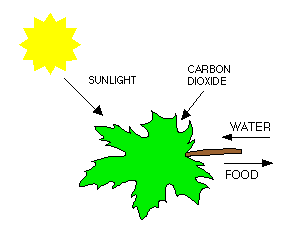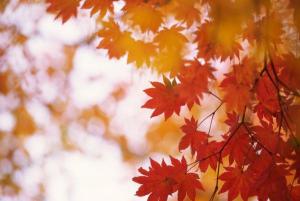Scientifics
Why Leaves Change Colours
Rosanna Gullveig
It’s that beautiful time of year again, when the leaves magically transform from their summery shades of green, to hues of red, gold and orange. Have you ever wondered how and why leaves change colours? Well, this month we’re going to examine just that!
A quick lesson in biology
To start off, we have to take a closer look at what leaves do. All living things need energy to live, and we get that energy by eating. Plants use sunlight to produce the sugar (glucose) that our bodies use to make energy. The process by which plants make sugar is called photosynthesis.
The plant will take water from the ground through its roots, and carbon dioxide (CO2) from the air. Then, using a special molecule called chlorophyll (klor’-oh-fil), the plant will transform these molecules and manufacture sugar and oxygen.

Plant Pigments
Plants are generally green because they contain large quantities of chlorophyll, a pigment that produces a green colour. We see the leaf as being green because the pigment absorbs all the wavelengths except the green one. This wavelength is reflected by the pigment and thus it is the colour we see. (*see last month’s article on why the sky is blue for more information about colour and wavelengths).
Chlorophyll is not the only pigment present in leaves. There are also carotenoids ('kar-uh-teen-oyds) and xanthophyll ('zan-thuh-fil), which produce orange, brown and yellow colours. Carrots contain large amounts of carotenoids. Do you see the similarity in their names? Anthocyanins (an-thuh-'si-uh-nuhns) are another group of pigments, which produce shades of red. These pigments are common in cherries, strawberries and plums.
Why do the leaves change colour?
During the spring and summer, plants are continuously producing sugars via photosynthesis. This means that chlorophyll is present in vast amounts within the plant cells. The presence of the green chlorophyll masks the other pigments.
In the fall, changes in the length of daylight and in the temperature, are responsible for the changing colours of the leaves. As the days get shorter and the nights longer and cooler, the chlorophyll starts to break down. The green colour disappears, allowing the yellow and orange colours to become visible. At the same time, the high concentration of sugars in the plant cells combined with the shorter days, increases the production of anthocyanins in some plants. This gives us the brilliant red colours associated with dogwoods, red maples and sumacs. Different species of trees exhibit different colours depending on the amounts of pigments in their leaves.
Why are the colours more brilliant some years?
The intensity of the fall colours is due to weather conditions. A combination of warm, sunny days and cool, crisp nights bring the most impressive colours. These conditions maximize the sugar production, which influences the production of anthocyanin, the red colour pigments. The amount of moisture also influences the brilliance of the colours. Too much or too little water decreases the photosynthesis rate, which in turn influences the colour producing pigments.

Sources:
http://www.na.fs.fed.us/spfo/pubs/fs/colors/colors.htm
http://www.livescience.com/environment/061016_mm_fall_leaves.html
http://www.sciencemadesimple.com/leaves.html#LEARNMORE
